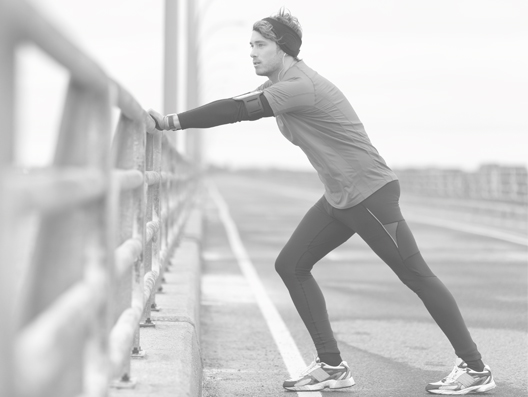
Most runners think of stretching as an important component of their training. The proposed benefits include faster recovery, decreased injury rates and improved flexibility. At PhysiOptima we believe strongly in the benefits of stretching as part of your warm-up and cool-down routine so here are some of our key tips:
(1) Warm-up with dynamic stretching, not static stretches. This involves using momentum and muscle effort to stretch and the end position is not held. It is recommended to do 5-10 minutes of multidirectional stretches, and examples include: walking lunges, side steps, high knee marching and heel flicks. If you have a problem area, then doing more dynamic stretches of those areas is recommended.
(2) Static stretches are better after a run. And don’t hold them for more than a minute- studies have shown that this negatively affects performances. Instead, limit static stretches to 15-30 seconds and do 3-5 repetitions per stretch.
(3) Don’t just do stretches pre- or post- run or work out. It is also important to stretch areas that have been identified as being tight more regularly, such as throughout the day and especially after sedentary periods and before bedtime.
(4) Don’t do ballistic stretching. This involves bouncing movements which push the joints/tendons/ligaments past their normal range of motion and may potentially cause injury. There is very little justification for long-distance runners to do this type of stretching but some sprinters may incorporate this into their training.
(5) Don’t push through pain when stretching. Pain is the body’s warning for you to stop. If you feel pain on stretching, it may be a sign of an injury developing and it is a good idea to seek the advice of a physiotherapist.
(6) Don’t assume “tightness” equals the need to stretch. Sometimes the body will tighten up to protect an area or because of weaknesses or faulty movement patterns. Your body may be relying on this tight area to protect a tissue. An example is a tight ITB (Ilio-tibial band) occurring because of weak gluteal muscles (buttocks). Or think of a tight hamstring protecting an irritated sciatic nerve. Stretching either of these structures without properly addressing the other deficits could be detrimental.
Stretching won’t ensure you are injury-free but it can certainly help! If you are worried about any aches or pains either during a run or during stretching, don’t stretch more to solve it! Seek an expert’s advice so that your problem doesn’t become a chronic one.
If in any doubt, don’t hesitate to get in touch with the team at PhysiOptima for professional advice!

